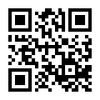文章基本信息
- 标题:گزارش يک مورد اختلال تجزيهای با تظاهرات نامتعارف و درمان موفقيتآميز با روشهای شناختی- رفتاری
- 其他标题:Successful Usage of Cognitive Behavioral Therapy in Dissociation Disorder with Unusual Symptoms
- 本地全文:下载
- 作者:M. Samimi Ardestani ; M. T. Yasami
- 期刊名称:Iranian Journal of Psychiatry and Clinical Psychology
- 印刷版ISSN:1735-4315
- 电子版ISSN:2228-7515
- 出版年度:2003
- 卷号:9
- 期号:1
- 页码:42-46
- 语种:Persian
- 出版社:Tehran University of Medical Sciences
- 摘要:
چکيده
هدف: هدف از نگارش نوشتار حاضر، گزارش مورد غيرمتعارفی از اختلال تجزيهای بهشکل رفتار چرخشی تکرارشونده همراه با افت عملکرد تحصيلی و روشهای درمانی بهکار بردهشده بوده است.
روش: مورد گزارش شده دانشجوی مرد 22سالهای است که از 10 سالگی رفتارهای چرخشی همراه با خيالپردازی داشته و به دليل صرف وقت بسيار زياد برای اين رفتار دچار افت تحصيلی گرديده است. درمان بيمار با بهرهگيری از روشهای خودبازنگری، انجام آرامش عضلانی، انجام کارهای منحرفکننده ذهن و بهکارگيری روش توقف فکر و تنبيه آغاز گرديده و با آموزش جرأت آموزی و برخی روشهای رفتاری ادامه يافت.
يافتهها: پس از پايان برنامه درمان و بررسی پيگيری 8 ماه پس از آن رفتار چرخشی ازميان رفته و رفتارهای ميانفردی وی با ديگران بهبود چشمگير يافته بود.
نتيجه: روشهای شناختی- رفتاری میتوانند در کاهش علايم و بهبودی اختلال تجزيهای مؤثر باشند.
- 其他摘要:
Abstract
Objectives: This was a single case study of a patient with unusual dissociation disorder with repetitive rotating behavior. The patient’s school performance had dropped signifycantly as a result of this illness and other treatment methods had proven relatively ineffective.
Method: The subject was a 22 year old male college student who had been exhibiting rota- ting behavior along with day dreaming since the age of 10. Engaging in such behaviors had lowered his school performance. His cognitive behavioral therapy (CBT) commenced with using methods of self-monitoring, muscle relaxation, thought distraction, thought stopping, and aversion, followed by self assertive training and other behavioral methods.
Findings: Upon completion of treatment program and again at the 8-month follow up evalu- ation, the patient’s rotating behavior was extinct and his interpersonal behavior was signifi- cantly improved.
Results: CBT method can be effective in symptom reduction and improvement of dissocia- tion disorder.
- 关键词:اختلال تجزيهای; رفتار چرخشی; درمان شناختی- رفتاری
- 其他关键词:dissociation disorder; rotting behavior; CBT

